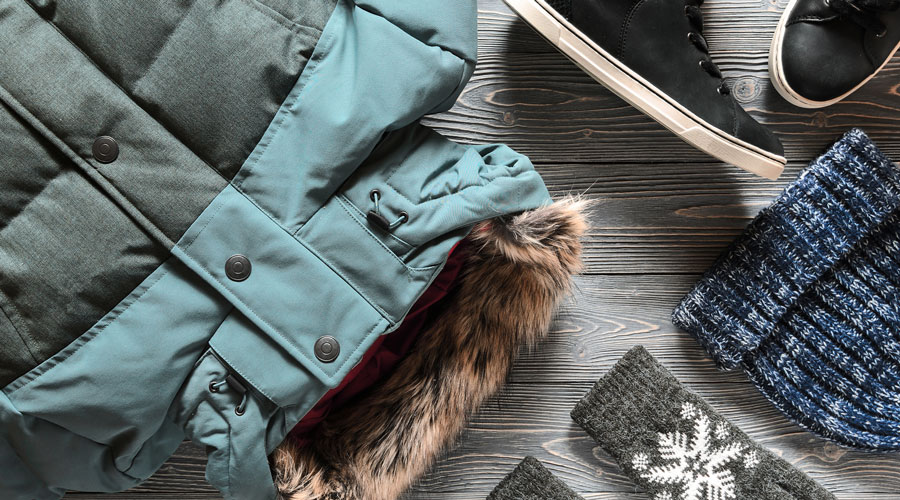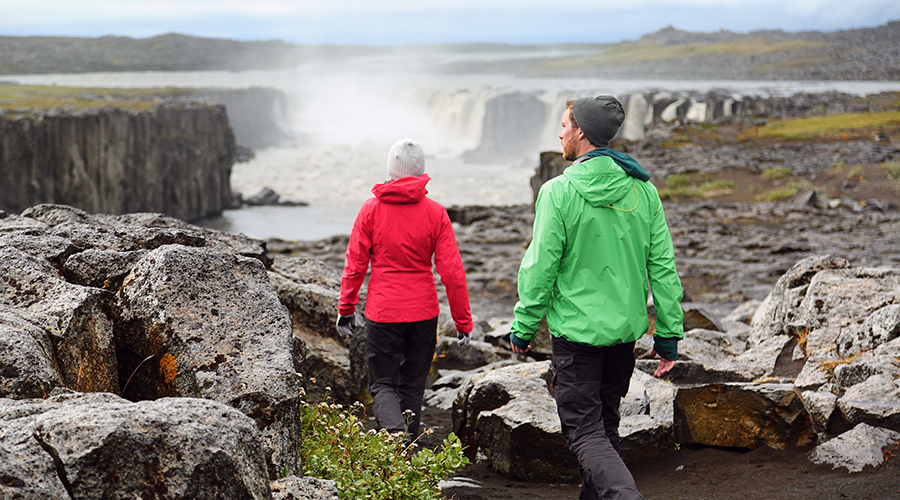
Packing for a trip to Iceland can be tricky. The weather is unpredictable, which is wonderful since it helps create all of the fascinating natural phenomenon you'll encounter, but it's also frustrating and downright miserable if you don't bring the right gear to keep you comfortable. I've put together a list of things to pack for an Iceland guided tour that will help you stay dry and comfortable no matter what kind of weather Iceland sends your way.
Base layer 1: underwear
Look for synthetic or Merino wool under shirts. Synthetic fibers will dry more quickly, and for those who like the feel of micro-soft wool, Merino wool is heavenly. Avoid cotton underwear. It absorbs moisture and is slow to dry. Your briefs should also be made of moisture wicking material. Sock liners are another item I suggest because they're a thin wicking layer to wear underneath heavier hiking or snow sport socks. They're perfect for staying dry and preventing blisters.
Base layer 2: thermal underwear
Thermal underwear is usually not needed in summer as temperatures average 10-13º C (50-55º F) in the South and 15-18º C (59-65º F) in the North. That said, on a rare occasion rain, sleet, and snow can make an appearance, making it essential to have this extra layer with you in case you need it. Winter temperatures average around 0º C (32º F), but it can get as low as -10º C (14º F). The Icelandic winter is relatively mild for its latitude, but it can be very windy with rain, sleet, and snow to be expected. You'll certainly need a layer of thermal underwear for winter.
Look for snug fitting, moisture wicking long underwear. Avoid cotton since it absorbs moisture and will make you feel colder. I recommend synthetics or Marino wool since they both dry quickly. Merino wool offers more warmth, but is still comfortable on warm days. Pay attention to the fabric weight of your long underwear. Avoid ultra-light materials and choose from lightweight to heavyweight fabric based on how well you tolerate cold.
Insulating layer 1: tops, leggings and socks
If you tend to be cold, or if you like to add thin layers over one another, you'll be comfortable in a turtle neck (or similar light shirt) or a fleece hoodie. Fleece leggings are perfect if your feet and legs tend to get cold. Think about adding an additional fleece legging layer to provide warmth and breathability without the extra padding. You can pack heavier fleece for colder days and lighter ones for warmer days. At times, mostly in South Iceland, the temperatures can hover around freezing. If you tend to warm up quickly, fleece leggings may not be the best option for you.
If your feet run cold, a second pair of thick wool socks could do the trick. Some guests also pack a pair of mid-thickness and thick socks just to have options. Merino wool socks are expensive but well worth the money since they offer the best comfort to warmth ratio.
Insulating layer 3: jackets, sweaters, pants, hats and gloves
I recommend a light jacket (possibly fleece) or jumper, the former if an optional insulating layer 1 is used, the latter if it isn't. This layer should keep you warm enough in sunny conditions without wind so you won't need a protective layer.
Wind-breaker trousers are a must if you're not wearing waterproof pants as a part of your protective layer. Wear wind-breaker trousers with a water resistant shell as an outer layer when it rains. This type of trouser is usually water resistant, and will tolerate light rain. It is less effective in stronger downpours.
An insulated winter hat, thinsulate-type waterproof gloves and a cosy scarf are all great ways to protect everything that's not covered by all of your clothing layers. When choosing gloves, consider ones that work with a touch screen to help with picture taking.

Protective layer: Jacket, sunglasses, water resistant pants and hiking boots
An insulated, completely waterproof jacket is very strongly recommended. On tour, you will be spending a lot of time outdoors. Hooded jackets are the best choice for extra protection. Sunglasses are an absolute essential.
Water resistant or waterproof shell pants should be worn with long underwear for warmth and protection from the elements whilst offering flexibility and mobility. Jeans and other cotton-based pants are not recommended because once they get wet, they stay wet.
Waterproof hiking boots are probably the most critical piece of clothing you will bring with you. This is not the time for sneakers, regular work boots or fashion statements. Think warmth, durability and traction and you've got it. For winter exploration, removable nanospikes work well in case you encounter ice. Crampons are not necessary.
Once you're properly prepared for the weather in Iceland, you'll be ready to get out there and explore in comfort. Happy traveling!
Read more about what kind of weather to expect in Iceland here.

